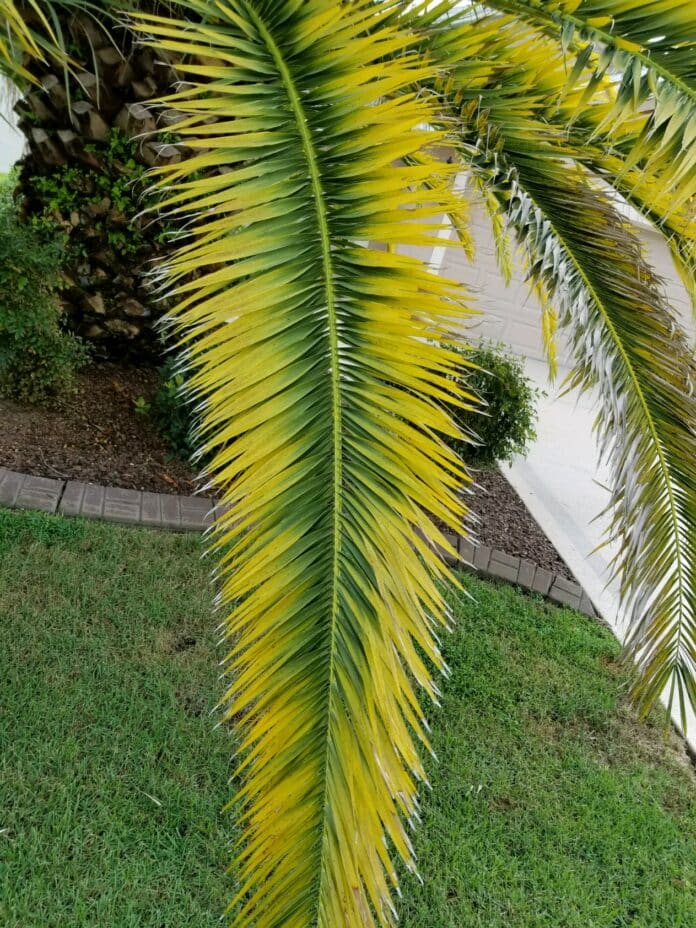Is your palm tree dying? Does it really need to be removed? What fertilizer does it need? When can you prune the leaves? These are all common questions UF/IFAS Extension receives monthly throughout the state. Palm trees are without a doubt one of my favorite plants. Although I have been working with palm trees for over 12 years, there is still a lot to learn when it comes to management. In today’s article, I will address the basics of fertilization.
Palm trees, for the most part, are one of the slowest growing plants in the landscape. They have different fertilization and other management needs than other plants. One thing that most homeowners do not realize is that palms are not even trees. They are more similar to turfgrass or corn than oaks or magnolias.
Fertilization is specific for palms. First, they require an 8-2-12 formulation with 4% magnesium. This is a complete fertilizer. Since palms are slow growing, their macronutrients need to be slow release. Preferably as close as to 100% as possible. Examples of macronutrients include nitrogen, potassium, and magnesium. Fertilizer that is little to no slow-release, could possibly harm your palm. Fertilizer formulations made for turfgrass, for example, are not recommended for use around the roots of palm trees. Doing so will result in a nutrient deficiency that could be fatal. Micronutrients such as iron and manganese need to be in a more soluble form. The only micronutrient that needs to be slow release is boron. Only 0.15% of boron is needed. If it is absent, the palm will suffer from boron deficiency, which also can be fatal. A baseline application of 1.5 lbs./100 square foot of canopy is needed. For example, if you have a palm tree with a canopy that is 10×10, you apply 1.5 lbs. of fertilizer. When applying the palm fertilizer, spread it out evenly under the entire canopy. Water it in to activate it. Fertilize every three months from March to October. No fertilization is needed during the winter months.
Before you do fertilize, ask yourself if your palm really needs to be fertilized in the first place. I would recommend that you contact us. Only fertilize if your palm needs it. If not, leave it be. For more information on fertilization, visit: http://edis.ifas.ufl.edu/pdffiles/EP/EP51600.pdf
If your palm is turning yellow or has a significant number of brown leaves, give Extension a call or stop by our office. Our service is free. The University of Florida is a land grant university. The Cooperative Extension System, established with the Smith-Lever Act of 1914, provides research-based education to the public to improve their daily lives.
Contact UF/IFAS Extension Hernando County at 16110 Aviation Loop Drive, Brookville 34604. Telephone: 352-754-4433. Office hours are 8 a.m. to 5 p.m. Monday through Friday. UF/IFAS Extension in Hernando County is a free service that provides solutions for your life. Extension programs are open to all persons without regard to race, color, sex, age, disability, religion, or national origin.

